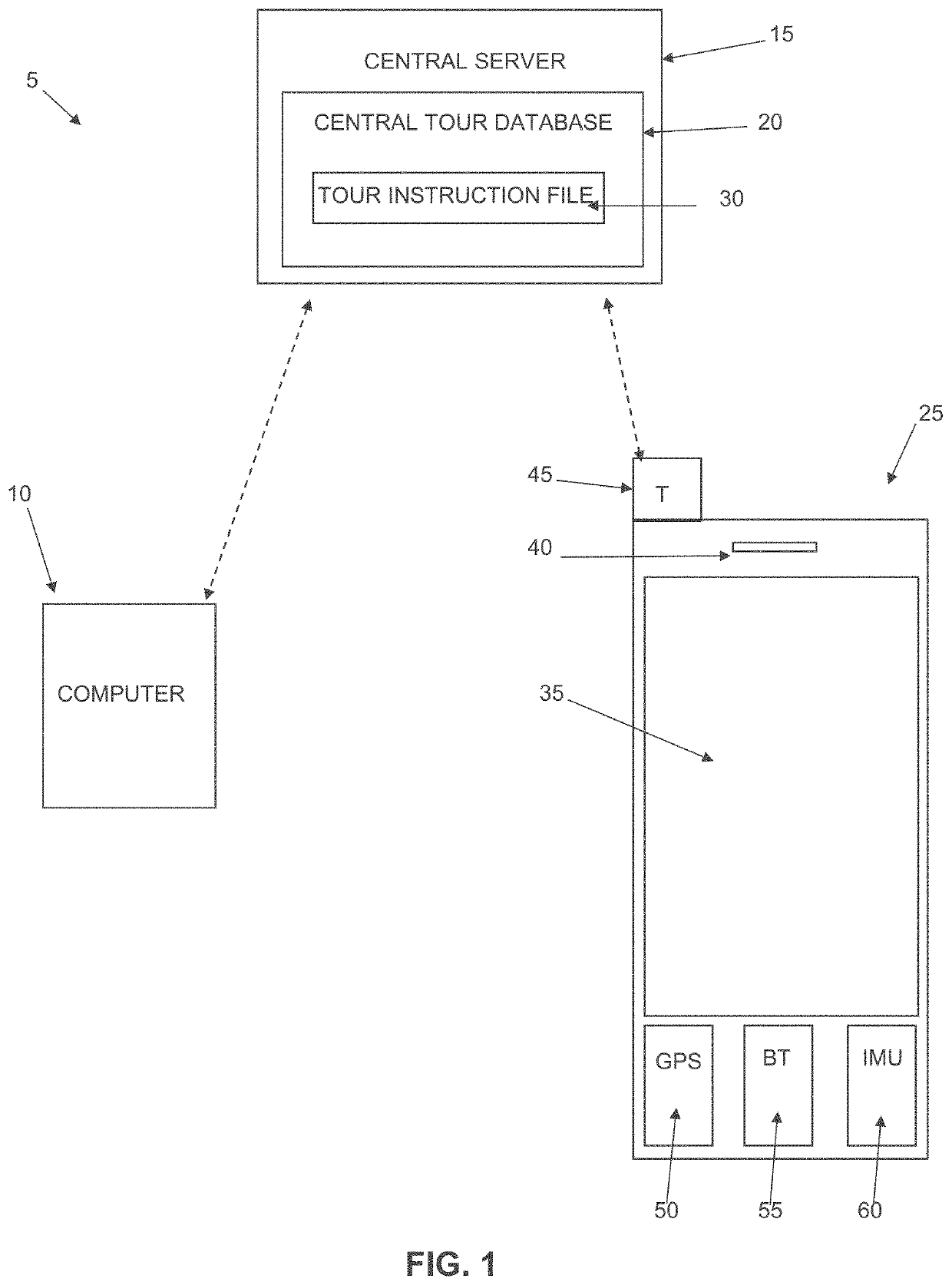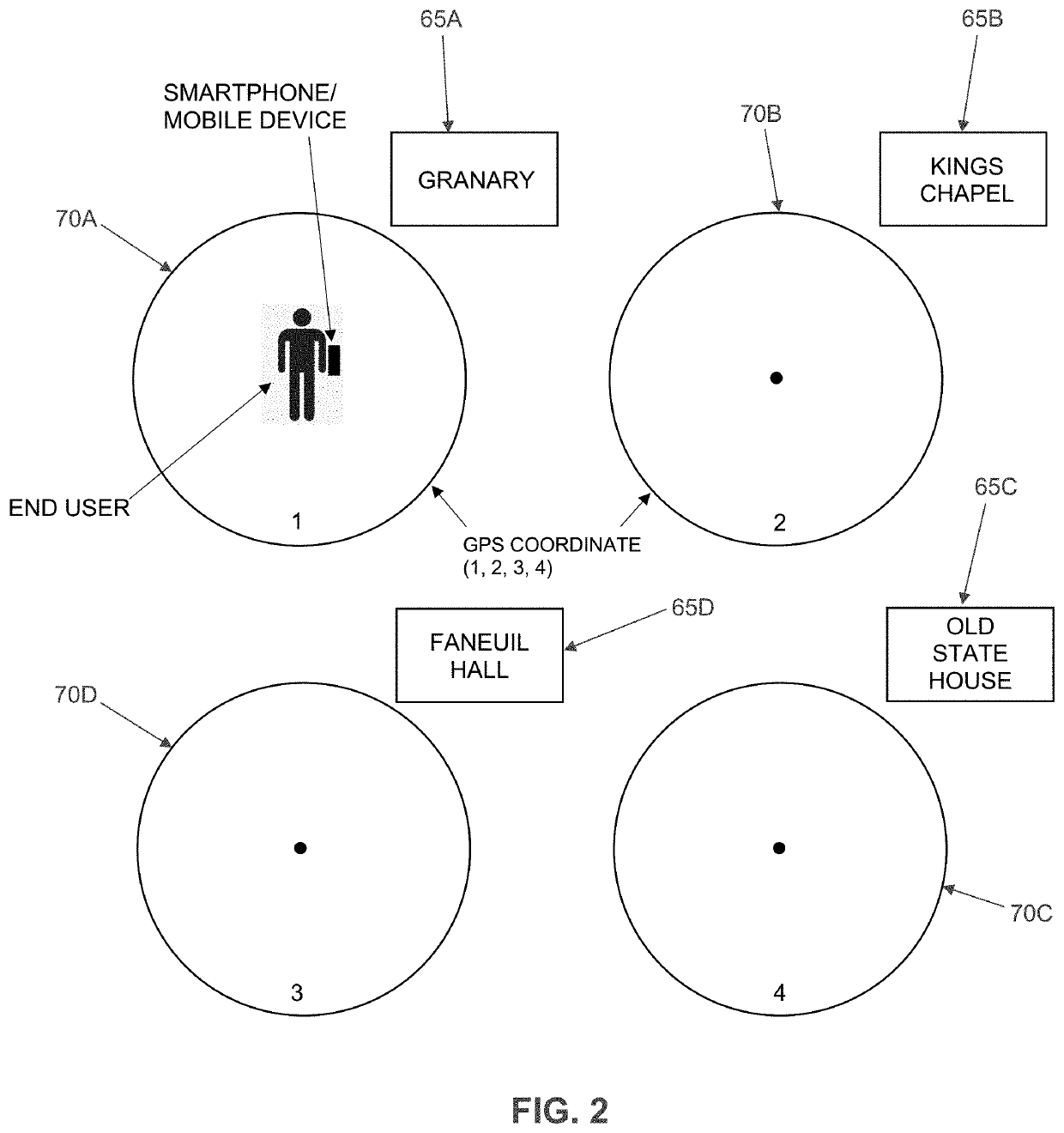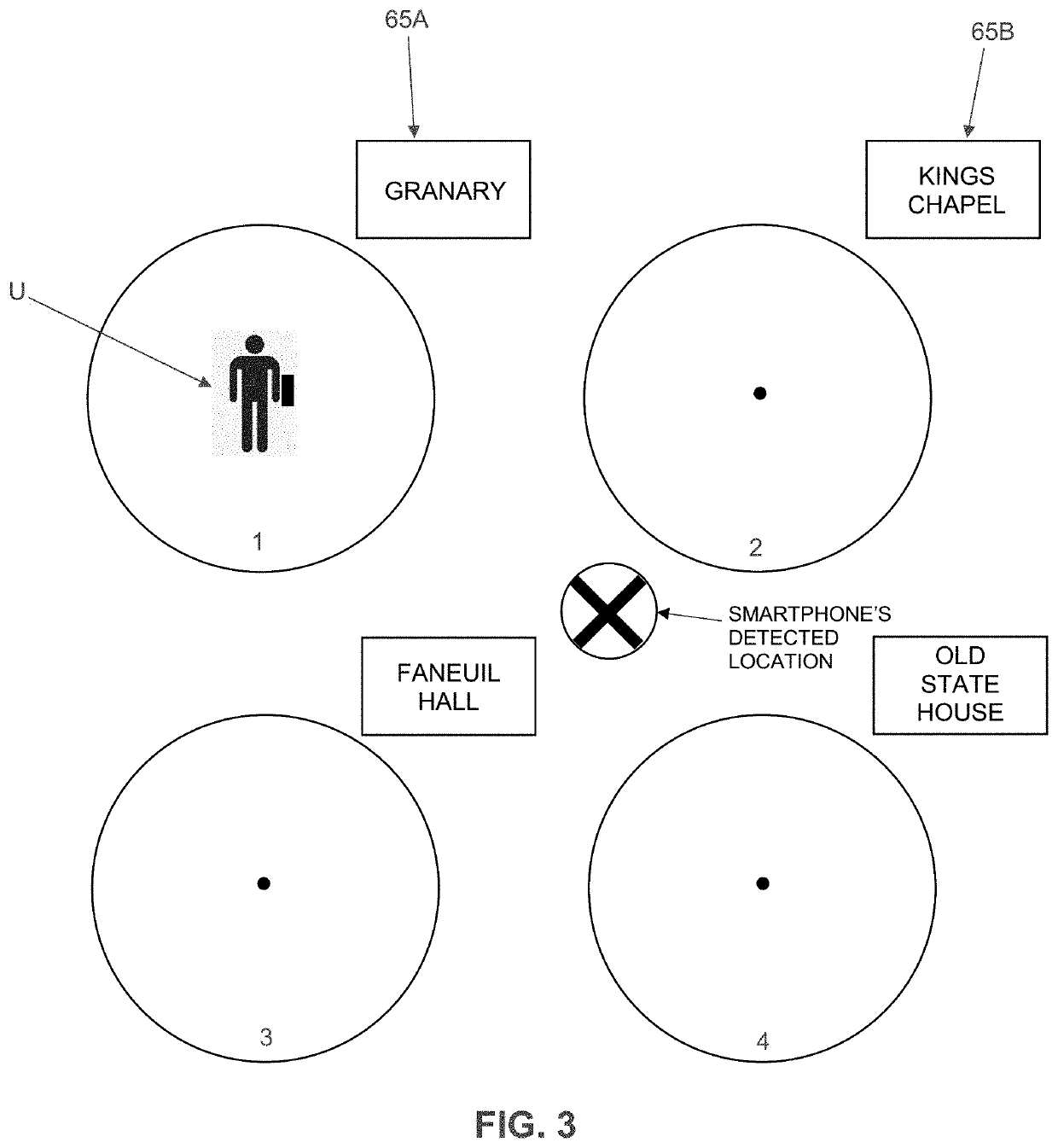Self-guided audio tours using portable electronic devices to deliver the tour to an end user are known, however, conventional self-guided audio tours suffer from several significant disadvantages.
Furthermore, such systems do not ordinarily provide any way to direct the end user from one location / exhibit to another location / exhibit.
It is known in the prior art to use
global positioning system (GPS) coordinates and GPS-linked maps to guide end users on self-guided audio tours, however, such prior art GPS-based systems also suffer from significant drawbacks.
By way of example but not limitation,
GPS signals can be inaccurate (or non-existent) when the
receiver is located indoors, when
metal objects are near the
receiver, when the
receiver is disposed within a case (e.g., within a smartphone case), when buildings reflect
GPS signals, when atmospheric changes or weather affect the GPS
signal, and / or locations / exhibits on a particular tour path can be disposed so close together that
GPS signals are not accurate for discriminating between particular locations / exhibits, and hence such a prior art
system may misidentify the location / exhibit that the end user is actually viewing when the system relies on GPS coordinates to make the determination of position (i.e., the end user is at the second stop of a tour, but the
GPS receiver erroneously concludes that the end user is two blocks away at the fourth stop, and the GPS-based tour plays the fourth stop rather than the second stop, since the GPS erroneously concluded that the end user was at the fourth stop.
In addition, when an end user is undertaking a self-guided audio tour that relies on GPS coordinates to identify locations / exhibits on the tour, and when the end user is in the space between two exhibits (e.g., in a gallery of a museum with painting exhibits on different walls), the GPS coordinates may correctly identify the gallery, but will not be able to identify which exhibit the user is viewing.
As a result, since such a prior art system does not know the orientation of the user, the system cannot guide the user from one exhibit to another exhibit.
However, where prior art systems utilize
BlueTooth beacons to identify a particular exhibit, such systems suffer from being unable to discriminate between
BlueTooth beacons having overlapping zones, and hence such systems can misidentify an exhibit and play the incorrect audio relative to the exhibit that the user is actually viewing.
In addition, prior art systems deliver only “static” audio to the end user, that is, audio that is unrelated to the actions and movement of the end user.
Such prior art systems also generally require the end user to listen to an entire audio file before moving on to next exhibit, or such systems continue playing the same audio file despite the fact that the end user has moved to a different exhibit, thereby confusing the end user.
In addition, when developing the tours, the tour creator lacks the choice of audio styles that are delivered at each location.
In addition, with current systems, the tour creator has no option to expand on current location stories.
The requirement that the end user wear
headphones isolates the end user from others (and / or causes a potentially hazardous
distraction, such as when engaging in a tour outdoors, crossing streets, etc.), and the use of a main speaker can be disruptive in indoor environments (e.g., a museum), and particularly when multiple users are undertaking tours simultaneously.
Finally, it should be appreciated that where proprietary handsets or
proprietary software (e.g., existing third-party apps) are used to deliver a self-guided audio tour, such systems are not easy to distribute across different platforms (e.g., different operating systems such as iOS, Android, etc.), and encumbers the end user by forcing the end user to either utilize proprietary hardware (e.g., handsets), or download proprietary apps (e.g., third-party apps) to run on the user's own portable electronic device (e.g., a smartphone).
Requiring different apps for different locations (and requiring the user to download and install such apps) is a significant drawback of prior art systems, and makes it difficult for tour creators to distribute tours to users.
Also, with current apps that provide GPS tours or provide museum tours, these apps only provide one type of tour.
There is no
software solution that allows a tour creator to create multiple types of tours (i.e. GPS tours,
Bluetooth tours, tour-by-number tours, virtual tours, etc.) and publish them to a marketplace app that provides many tour experiences to end users on multiple platforms (e.g., iOS, Android, etc.)
 Login to View More
Login to View More  Login to View More
Login to View More 


